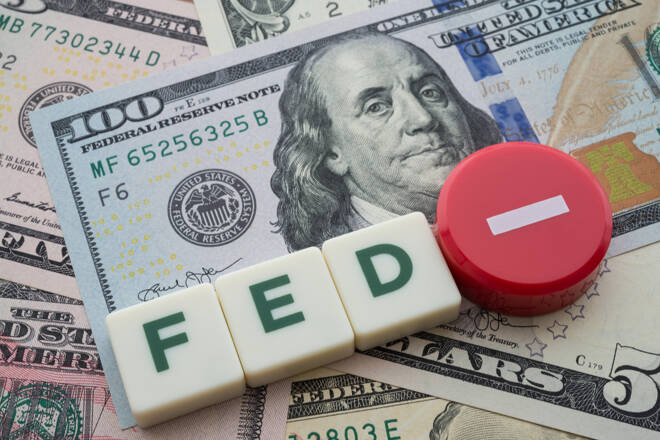Advertisement
Advertisement
US Dollar (DXY): Lower as ECB Raises Rates, Uncertainty Surrounds Global Policies
By:
ECB's rate hike spurs greenback decline, market volatility worries; policymakers address inflation, labor, wages impacting dollar (DXY).
Highlights
- ECB raises rates, signaling further policy tightening.
- Inflation challenge: balancing labor market, wages, and price pressures.
- Divergent policies: ECB tightens, while the Fed pauses rate hikes.
Overview
The U.S. Dollar is lower against a basket of currencies on Thursday as the European Central Bank (ECB) raised interest rates for the eighth consecutive time on Thursday. This move was in line with expectations, and the ECB also indicated its intention for further policy tightening to combat high inflation. With borrowing costs now increased by a record 4 percentage points within a year, the focus shifts to the duration that rates will be maintained at current levels.
ECB Policymakers Face Challenges
With inflation currently at 6.1%, below last year’s double-digit figures, policymakers are faced with the challenge of reconciling a tight labor market, strong nominal wage growth, and persistent price pressures in sectors like services. The prevailing consensus among policymakers suggests a likely rate hike in July, with many also considering the possibility of an increase in September.
The ECB has expressed its commitment to achieving a timely return of inflation to the 2% medium-term target through future interest rate decisions. This commitment follows the ECB’s decision to raise the deposit rate by 25 basis points, reaching a 22-year high of 3.5%. The central bank emphasized upward revisions in inflation projections, excluding energy and food, citing past data surprises and the impact of a robust labor market on disinflation’s pace.
Prior to the ECB’s announcement, market participants had already factored in the likelihood of a 25 basis point rate hike in July or September, with a moderate chance of another move later in the year, possibly in September or October. Additionally, the ECB confirmed the anticipated end of reinvestments in its 3.2 trillion euro Asset Purchase Programme starting from July 1.
Fed and ECB Policies Diverge
In contrast to the ECB’s tightening stance, the U.S. Federal Reserve paused its rate hikes after a series of ten increases, signaling the potential conclusion of the global tightening cycle. However, some additional tightening remains a possibility. These divergent monetary policies add further complexity to the decision-making process for central banks worldwide.
Dollar Could Weaker Further after ECB Lagarde’s Remarks
As investors await ECB President Christine Lagarde’s news conference, the U.S. Dollar’s decline against major currencies highlights the impact of the ECB’s interest rate decision. The central bank’s focus is on combating inflation and achieving its medium-term target. This, along with the uncertainty surrounding global monetary policies, sets the stage for potential market volatility. Traders should closely monitor upcoming central bank meetings and statements to gauge the short-term direction of the U.S. Dollar, as well as the implications for other major currencies.
Technical Analysis
The main trend is up, however, momentum is trending lower.
After consolidating for several days, the market is in a weak position, while shifting momentum to the downside.
If the downside momentum continues then we could see the selling pressure extend into 102.208 (S1). A break though this level could trigger an acceleration into 101.736 (S2).
Holding 102.208 will indicate that buyers are coming in to defend the trend. Overcoming 104.205 (R1) will signal a resumption of the uptrend with 105.00 (R2) the next target.
| S1 – 102.208 | R1 – 104.205 |
| S2 – 101.736 | R2 – 105.000 |
| S3 – 100.340 | R3 – 105.250 |
For a look at all of today’s economic events, check out our economic calendar.
About the Author
James Hyerczykauthor
James Hyerczyk is a U.S. based seasoned technical analyst and educator with over 40 years of experience in market analysis and trading, specializing in chart patterns and price movement. He is the author of two books on technical analysis and has a background in both futures and stock markets.
Advertisement
